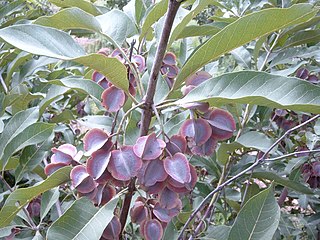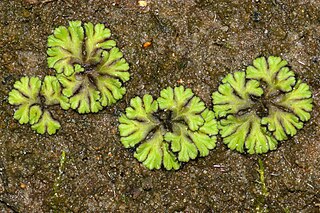In linguistics, a false friend is either of a pair of words in different languages that look or sound similar, but differ significantly in meaning. Examples include the English embarrassed and the Spanish embarazada ("pregnant"); English parents and Portuguese parentes and Italian parenti ; English bribe and French bribe ("crumb"); English gift and German Gift ("poison"), and Norwegian gift ("married").

Sunni Islam is by far the largest branch of Islam, followed by 85–90% of the world's Muslims. Its name comes from the word Sunnah, referring to the behaviour of Muhammad. The differences between Sunni and Shia Muslims arose from a disagreement over the succession to Muhammad and subsequently acquired broader political significance, as well as theological and juridical dimensions. According to Sunni traditions, Muhammad left no successor and the participants of the Saqifah event appointed Abu Bakr as the next-in-line. This contrasts with the Shia view, which holds that Muhammad appointed his son-in-law and cousin Ali ibn Abi Talib as his successor.

Combretum, the bushwillows or combretums, make up the type genus of the family Combretaceae. The genus comprises about 272 species of trees and shrubs, most of which are native to tropical and southern Africa, about 5 to Madagascar, but there are others that are native to tropical Asia, New Guinea and the Bismarck Archipelago, Australia, and tropical America. Though somewhat reminiscent of willows (Salix) in their habitus, they are not particularly close relatives of these.

Zanthoxylum is a genus of about 250 species of deciduous and evergreen trees, shrubs and climbers in the family Rutaceae that are native to warm temperate and subtropical areas worldwide. It is the type genus of the tribe Zanthoxyleae in the subfamily Rutoideae. Several of the species have yellow heartwood, to which their generic name alludes.

Marchantiopsida is one of three classes within the liverwort phylum Marchantiophyta.

Schinopsis is a genus of South American trees in the family Anacardiaceae, also known by the common names quebracho, quebracho colorado and red quebracho. In Brazil it is known as baraúna or braúna.

The genus of the myrrhs, Commiphora, is the most species-rich genus of flowering plants in the frankincense and myrrh family, Burseraceae. The genus contains approximately 190 species of shrubs and trees, which are distributed throughout the (sub-) tropical regions of Africa, the western Indian Ocean islands, the Arabian Peninsula, India, and Vietnam. The genus is drought-tolerant and common throughout the xerophytic scrub, seasonally dry tropical forests, and woodlands of these regions.

Faurea is a genus containing 15 species of flowering plants in the protea family which occur in the summer rainfall area of southern Africa, extending to tropical Africa and Madagascar. The name honours South African soldier and botanist William Caldwell Faure (1822-1844) who was killed on active service in India.

Vepris is a genus of plant in family Rutaceae. It comprises around 90 species, mainly from tropical Africa, Madagascar and the Mascarene Islands and at a lesser extent Arabia and India.

Operation N was a complex of sabotage, subversion and black-propaganda activities carried out by the Polish resistance against Nazi German occupation forces during World War II, from April 1941 to April 1944. These activities were organized by Office N, which in October 1941 was transformed into an Autonomous Sub-Department N of the Bureau of Information and Propaganda of the Armed Resistance, later of the Home Army. It was headed by Tadeusz Żenczykowski.

Olga Engl was an Austrian-German stage and motion picture actress who appeared in nearly 200 films.

Aroideae is a subfamily of flowering plants in the family Araceae. It is the largest subfamily in Araceae and consists of about 72 different genera, and 2,300 species. Many Aroideae have spiny pollen grains without a sporopollenin outer exine layer and lacking an aperture.
The APG III system of flowering plant classification is the third version of a modern, mostly molecular-based, system of plant taxonomy being developed by the Angiosperm Phylogeny Group (APG). Published in 2009, it was superseded in 2016 by a further revision, the APG IV system.

Per Karl Hjalmar Dusén (1855–1926) was a Swedish civil engineer, botanist and explorer. As a botanist his interests included pteridology, bryology, and paleobotany. He made botanical expeditions to Africa, Greenland, and South America. During his expeditions to Greenland, he visited Disko Island to catalogue the variety of flowering plants, horsetails and ferns.

Cola is a genus of trees native to the tropical forests of Africa, classified in the family Malvaceae, subfamily Sterculioideae. Species in this genus are sometimes referred to as kola tree or kola nut for the caffeine-containing fruit produced by the trees that is often used as a flavoring ingredient in beverages. The genus was thought to be closely related to the South American genus Theobroma, or cocoa, but the latter is now placed in a different subfamily. They are evergreen trees, growing up to 20 m tall, with glossy ovoid leaves up to 30 cm long and star-shaped fruit.
Trichoscypha acuminata, commonly called amvout, is a species of plant in the family Anacardiaceae. It is found in Nigeria, Cameroon, Equatorial Guinea, Central African Republic, Gabon, the Congos and Angola. Mature trees reach 20m in height and leaves are up to 1.5m long. Its natural habitat is rain forest. Fruits are dark red and edible.













